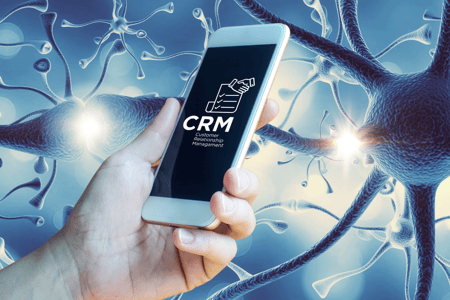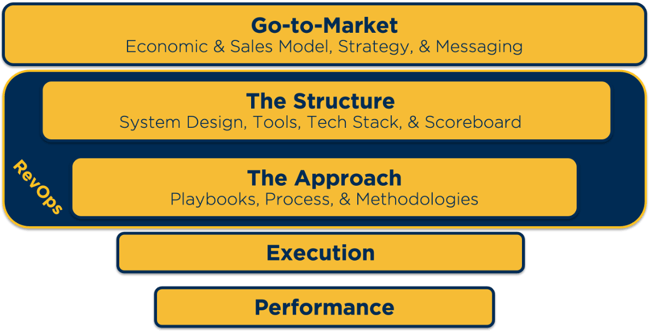 If everyone at Lift played “Doug Bingo” during meetings, there’s a good chance they’d fill up a card with baseball metaphors alone—but my second most predictable mention is anything to do with neuroscience. What can I say? I’m a nerd who loves America’s national pastime.
If everyone at Lift played “Doug Bingo” during meetings, there’s a good chance they’d fill up a card with baseball metaphors alone—but my second most predictable mention is anything to do with neuroscience. What can I say? I’m a nerd who loves America’s national pastime.
I’ve always been fascinated to understand why people do what they do, and that curiosity has created a bit of an obsession for me with neuroscience. As a result, I throw the term “reptilian brain” (aka the part of the brain that governs how we respond to threats) into many conversations. My obsession with neuroscience got me thinking about the idea of a CRM as the central nervous system of a business. Of course, while every CRM should do this job, some do it better than others.
I believe the differentiator is data structure and architecture. They provide the CRM structure—like the central nervous system and backbone—that allows your company to respond and create a continuous improvement iteration cycle.
Let me explain how I think thinking about your CRM as your business’ nervous system will help you build a stronger and smarter business leveraging data:
1. Centralized information:
When you think about it, it’s a miracle our bodies and brains do as many simultaneous things as they do. That’s thanks to the mind-body connection. Our central nervous system translates thoughts into actions and feedback from those actions back into thoughts and so on. It's responsible for the mind-body connection, etc.
Similarly, a CRM centralizes customer data from multiple sources, providing a holistic view of each customer’s interactions with your company. This allows you to understand their needs, pain points, and preferences.
One of the best books I’ve read in the last several years on the topic of managing complex systems is Team of Teams: New Rules of Engagement For A Complex World, by Stanley McChrystal. He shared an insight towards the end of the book that shook my world, not because it was a new thought, but because it put into words something I’d always felt intuitively, but could never put into words. One of his key points is the move from efficiency to adaptability and the need to distribute power (command/control) and execution.
At the core of the task force's journey to adaptability lay a yin and yang symmetry of shared consciousness achieved through strict centralized forums for communication and extreme transparency and empowered execution, which involved the decentralization of managerial authority.
A strong CRM platform makes this possible for your go-to-market teams. It also allows different departments to have the same information so they can work together.
2. Structural support and alignment:
Just like a backbone carries impulses from the brain to the rest of the body, your CRM connects different departments, enabling the elimination of siloes and creating a way to better serve customers. Without this, you’re dealing with chaos, as everyone and everything operates independently, using different information as the starting point. When CRM is done right, everyone in your organization has access to the same information, which creates a more effective and targeted customer experience.
Several years ago, we created The Revenue Acceleration Framework. One of the key findings that led to the creation of the framework was a structural gap that naturally exists in companies. We found that the difference between the top companies that are able to sustainably scale growth on those that were close, but never were able to generate the same velocity was not that the better companies had a better strategy, or even that they had better people - it was that they addressed the gap created that fragmented the translation of the strategy to execution and closed the loop effectively, enabling the experience and learnings that occurred on a day-to-day basis to feed back into, and enhance the strategy.

So, how do you do this the right way? Data architecture and structure serve as your company’s backbone. If you’re experiencing excessive friction and every attempt to address it doesn’t seem to improve anything, then it’s time to re-evaluate your data architecture and structure. I’m always surprised that many companies—even very, very sophisticated companies—don’t really think about revisiting their structure, even when they aren’t getting the results they need. Data structure and architecture are not “set it and forget it” functions.
As a semi-related note: It’s a common misconception that an entity relationship diagram (ERD) is synonymous with data architecture. A good ERD is a deliverable that comes from a strong architecture. If you have an ERD, great—it just doesn’t mean that you don’t need to re-examine the overarching structure.
3. Flexibility:
As we all know, your nervous system allows you to respond quickly to stimuli, whether a reward or a threat. Likewise, your CRM allows you to quickly respond to customers’ needs. An important element to facilitate this is understanding the “job to be done.” That means you must pinpoint the players and—as you do in the nervous system—the emotions involved.
Part of that is also understanding that customers can play different roles at different times. Too many businesses use their CRM to put customers into one box when they can occupy multiple ones. For example, you could have a new customer and new business. You could also have an existing customer and existing business or an existing customer and new business.
That circles back again to data architecture and structure. It requires a floating flexible function because customers are playing different roles in different situations and you need to be able to account for it. If you haven't built that flexibility, that also brings constraints.
4. Differentiation:
When you're delivering go to market, there’s a lot of talk about differentiation. Well, differentiation is variance—and many modern businesses are obsessed with eliminating variance because it promotes efficiency.
If your architecture and model don't embrace variance, aka rapid evolution, then you're actually killing value—which is why the sales reps don't adopt the CRM. That lack of variance makes their jobs harder to do. Obviously, there’s a happy medium and you can achieve it with thoughtful system design.
As I mentioned earlier, system design must begin with emotions and empathy. That hinges on a comprehensive, holistic understanding of the situation, the inputs, the stakeholders, and the objectives. After that, you create a hypothesis. It’s imperative to break everything apart so you can see the different elements and analyze them. Then, we synthesize and bring it together into its whole. That's how you manage complex systems.
If your goal is a more responsive, flexible organization that prioritizes the customer, you’d do well to think of your CRM as your business’ central nervous system. Prioritizing data structure and architecture will create a more connected, responsive company, enabling your employees to play the game better and pivot more quickly.

 Doug Davidoff
Doug Davidoff
